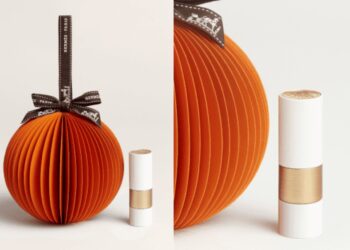
The Arceau Lift flying tourbillon watch is inspired by the historical idea of Hermès at 24, Rue du Faubourg Saint-Honoré in Paris. The double ‘H’ garnished on the tourbillon carriage and the barrel bridge of the Arceau Lift resembles one of the iconic motifs featured in the interior design of the boutique.
Testifying the celebration for wrought-iron work in the early 20th century, it appears in a few details including the entrance, the handrails, the banisters and the door of the Lift installed in 1923. The pattern of the Lift represents the union between Hermès and Hollande families in 1900 and this motif has now been given a watch-making reinterpretation by setting the bar for one of the most demanding complications, which is the the flying tourbillon. The tourbillon indeed appears to be flying and its classy rotations are accompanied by the double H, whereas the second Lift motif above the barrel bridge in the upper part of the watch remains fixed.

Arceau Lift represents an authentic technical feat driven by Calibre H1923, thus, named in reference to the date when the elevator was installed in the boutique. Some parts of the multi-layered movement form a dial with a raised chevron motif, alternating between purely decorative and more horological finishes.
The components of Calibre H1923 are indeed finished with the special care demanded by watch-making traditions. The bevelling on the bridges, wheels and screws is entirely done by hand while the 12 o’clock jewel surround, as well as the double H topping the tourbillon carriage, features the mirror-polishing technique also known as specular polishing. This can also be admired from the dial side and is also revealed through an opening carved out in the back of the gold case, bearing the Hermès ex-libris.
The Arceau Lift is fitted with an alligator strap crafted in the workshops of La Montre Hermès, and each of these 176 timeless limited edition watches is engraved with a unique individual number.









